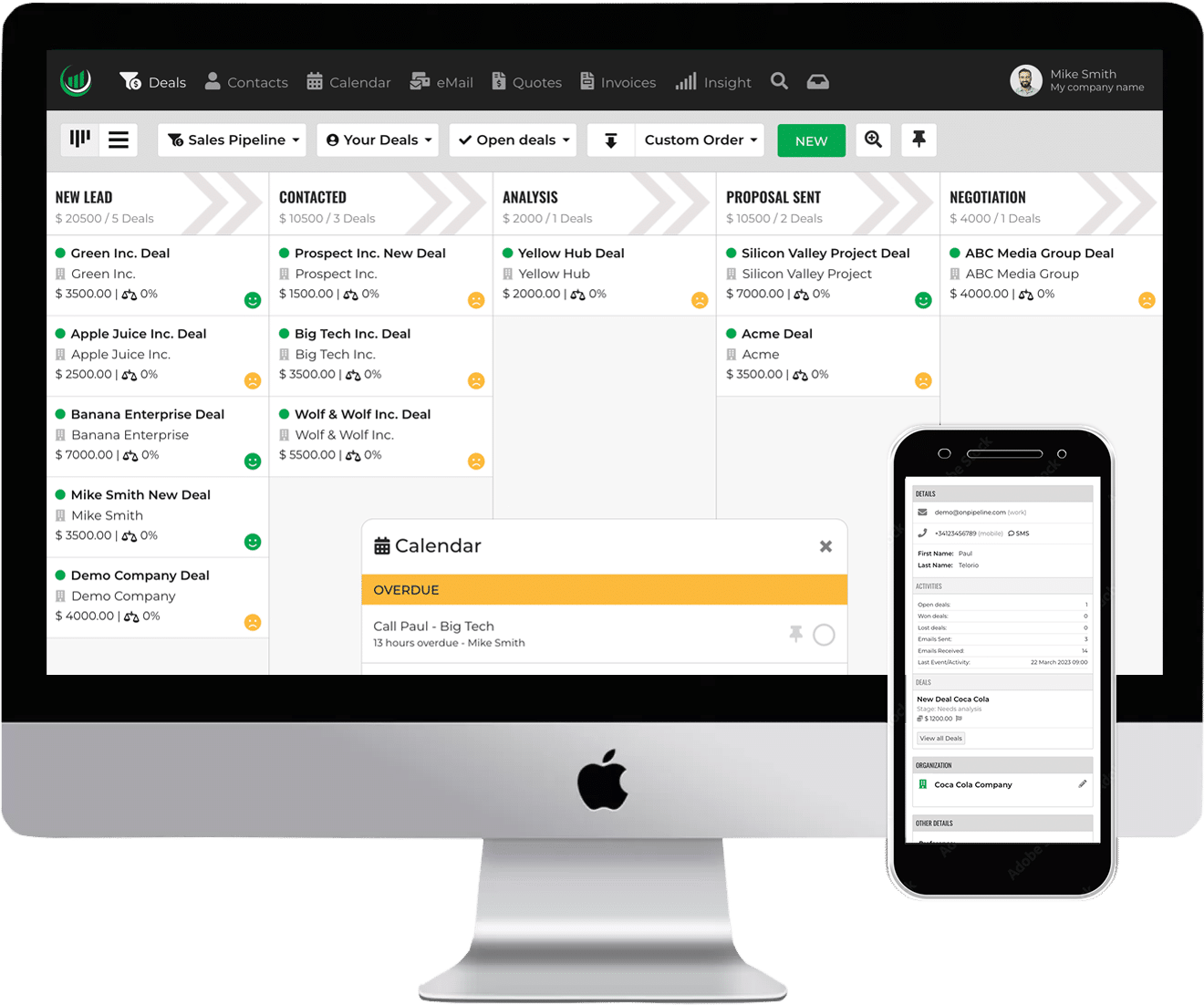Salespeople often have a lot of freedom to handle their daily tasks. They must be flexible and quick to connect with customers and achieve goals, but an established process for sales is also important. A clear sales process improves efficiency, sales, and overall performance.
What is a Sales Process?
A established sales process is predetermined, defined steps taking place to convert a prospective customer into a paying customer. Each step of the sales journey is covered, from the first contact through the closing.
Defining a process is beneficial for every business that sells products or services.
The 7-Step Sales Process
1. Prospect
In this initial stage, your organization identifies potential customers, known as leads. To achieve this, you can use sales prospecting questions, a market research, networking, or digital tools to track interest. The goal is to create a pool of individuals or organizations that might benefit from your product or service.
2. Prepare
Preparation is key to converting leads into sales. To engage with customers, be ready to meet their needs and respond to questions during sales conversations. Utilizing marketing content and tailored approaches based on lead profiles is crucial at this stage.
3. Approach
This step is about making the first contact with a potential customer. Salespeople must decide on the most effective method of approach, whether it’s via phone, email, or in person. The approach should be personalized, respecting the prospect’s preferences and communication style.
4. Presentation
Here, the sales team presents their pitch. To be effective, customize the presentation to meet the customer’s needs and interests. Emphasize how your product or service can solve their problems or benefit their business.
5. Handling Objections
Objections are common in sales, and this step involves anticipating and preparing for them. Sales teams should be equipped with information and strategies to address common concerns and questions, showing empathy and understanding towards the customer’s viewpoint.
6. Closing the Deal
This critical phase involves finalizing the sale. Sales techniques vary, from direct methods like asking for the sale to more nuanced approaches like trial closes. The key is to identify buying signals and act on them effectively without being too pushy.
7. Follow-up
The sales process doesn’t end with closing the deal. Following up after a sale is important. It helps keep customers happy and solves any issues they may have. It also helps build relationships for the future.
Even the most robust sales process may not cover every step of a potential lead’s journey. But, it provides your sales team with a reliable guide to follow when engaging with new leads.
The sales process refers to the various phases that customers go through before purchasing. The sales pipeline, however, is a little different.
What is a Sales Pipeline?
In sales pipelines, prospects are visualized based on where they are in the sales process. Think of it in the same way as a sales funnel.
The pipeline also shows sales reps forecast and how close they are to meeting quota. In a Sales CRM both sales reps and managers can use this information to forecast the number and value of deals in a period.
12 Tips for Creating a Sales Process
Sales is a process. It is structured, deliberate, and tactical. It calls for specific, measurable, and repeatable steps. Salespeople must learn how to sell. They must learn how to think like a buyer. They must learn how to develop a value proposition. They must learn how to persuade. And they must learn how to close.
Here are some suggestions on establishing a proper sales process for your team or your daily sales activities.
1. Invest time in interviewing your salespeople
Typically, an established sales process consists of several steps that represent the major stages of the sale (sales pipeline stages). To move a prospect from one stage to another, a salesperson will complete tasks associated with each stage.
First, you want to determine which practices are currently being used by your team to convert prospects into buyers.
- What are your salespeople’s methods of connecting with potential customers?
- What is their last action before a sale is completed in the final moments?
Learn your sales team’s language, methods, and techniques so you can include them in a system that is replicable and scalable for others.
2. Eliminate waste
You can better understand what is and is not working in your sales with a defined process of detailed steps. By identifying what events cause leads to progress through the sales cycle, you’re able to determine the proper actions to take to solve blockages and eliminate ineffective activities.
3. Stay on the course at all times
Sales reps often refer to their sales processes as “roadmaps.”
Salespeople are not required to follow this “roadmap” by checking tasks off a list once completed. In place of that, a sales process will perform as a navigation system with clearly defined milestones. Understanding the steps in the process will assist salespeople in determining where they are in the journey when to move forward, and how to adjust their approach.
4. Operating sales talent
Creativity is not lost when you have an established process. If you want to get from one phase to another, you can use your intuition and creative talents, as the process won’t dictate how to write a sales email – you decide how best to proceed.
5. Put yourself in your customer’s position
Sometimes, companies construct sales processes that reflect their own selling style rather than their customers’ buying style.
Selling situations and an successful sales process should accommodate customer needs. It would help if you asked the subsequent open-ended questions when designing your sales process based on your customer’s needs:
- Is there a central group of my customers?
- What are the differences between their buying habits?
- Do I deal differently with new and repeat customers?
- How can I meet the expectations of my customers at each sales phase?
6. Focus on building relationships
Companies want to build deep relationships with their customers. Consider a relationship-driven approach when you gain a potential customer’s attention and explain how that will benefit your sales team.
Customer relationships can be built and deepened by listening actively, empathizing, taking notes, building trust, and investigating feedback.
7. Determine what is stalling sales
It is possible to identify the reasons for stalled sales by embracing a sales process. You can analyze the results of your actions by following the process steps, and you will be able to then identify what was a mistake or a time-waster.
Consequently, functioning with a sales process enables you to tell how much was accomplished and how little.
8. Increase the quality of your leads
By adopting a distinct sales process, your sales associates can embark on its biggest challenge– filtering out poor potential sales leads and identifying prospects with the highest likelihood of purchasing.
The average B2B sales cycle takes between four and twelve months to complete, so identifying qualified prospects early will help reduce sales cycles, make them more targeted, and help increase your sales team’s productivity.
9. Improve forecasting and revenue generation
It helps sales managers develop more accurate sales forecasts if they are aware of where their salespeople are in the sales process. Because a sales process is a series of steps, it provides a more consistent picture of how many deals your team can close based on the number of leads generated. This allows you to determine your win rate and set quotas more accurately.
10. Always follow up
A timely follow-up email is a key to winning a sale.
After an often lengthy sales interaction, sales reps are often remiss in following up with potential clients after an (often lengthy) sales interaction. It is this alone that can lead to a loss of sales. Making follow-up calls keeps a buyer’s interest.
11. Improve the customer experience
Often, sales reps push customers too quickly into the next sale stage before they are ready for it.
Salespeople can damage relationships if not careful, and deals can be broken as a result. An effective sales process, which focuses on the customer, can transform a pushy, haphazard sale into an easy one.
To effectively sell value, build trust, and create a stronger bond with prospective customers, a sales process must consider the customer’s buying behavior and expectations.
12. Adopting new salespeople quickly
If you ask new salespeople to observe their colleagues sell rather than provide them with proper training, then you need a sales process!
Training rookies and coaching your sales team is easier with a well-defined sales process. In addition to offering specific steps for salespeople to follow, it will also tell them what behaviors and skills they need, what results to expect at each step, and how to apply their strengths.
Conclusion
With a defined sales process, you can ensure you are doing the right things and know what works and what does not. Having this information on hand will help you avoid making the same sales mistakes repeatedly.
Having a well-defined sales process has several long-term advantages.
- Build lasting relationships with customers,
- Increase customer lifetime value,
- Reduce the cost of customer retention,
- Increase referrals,
- Boost sales revenue.
By following a standardized sales process, a sales manager can concentrate on the items that matter: Lead distribution, task prioritization, managing your team’s time and workload, and making more accurate sales predictions.


